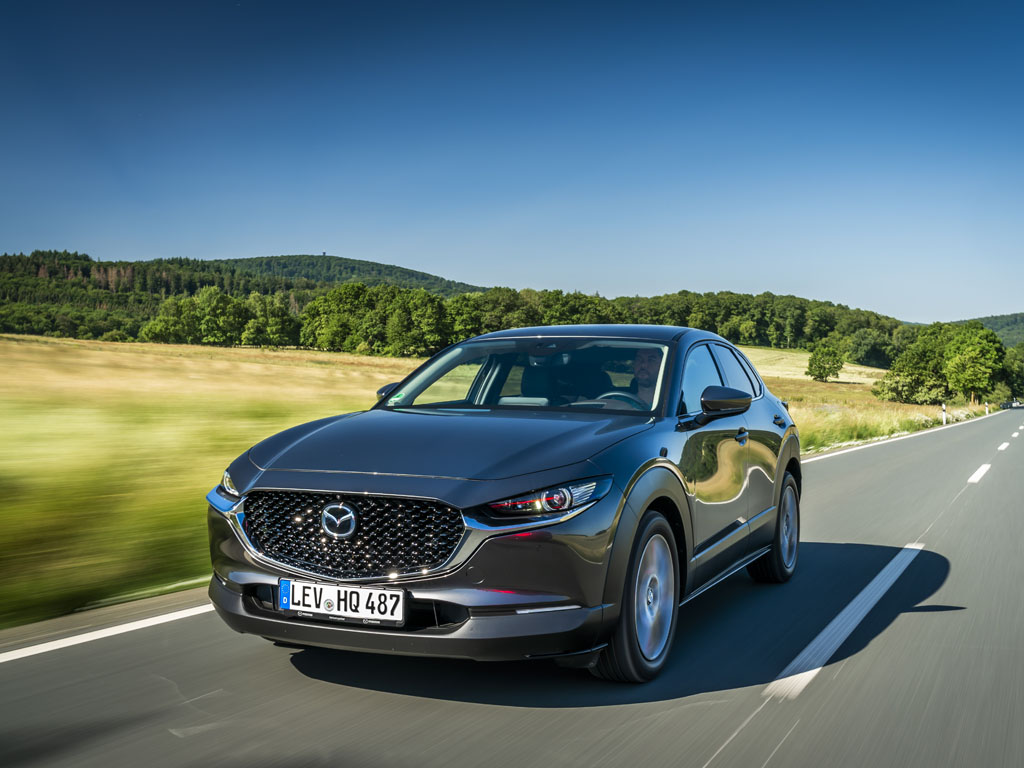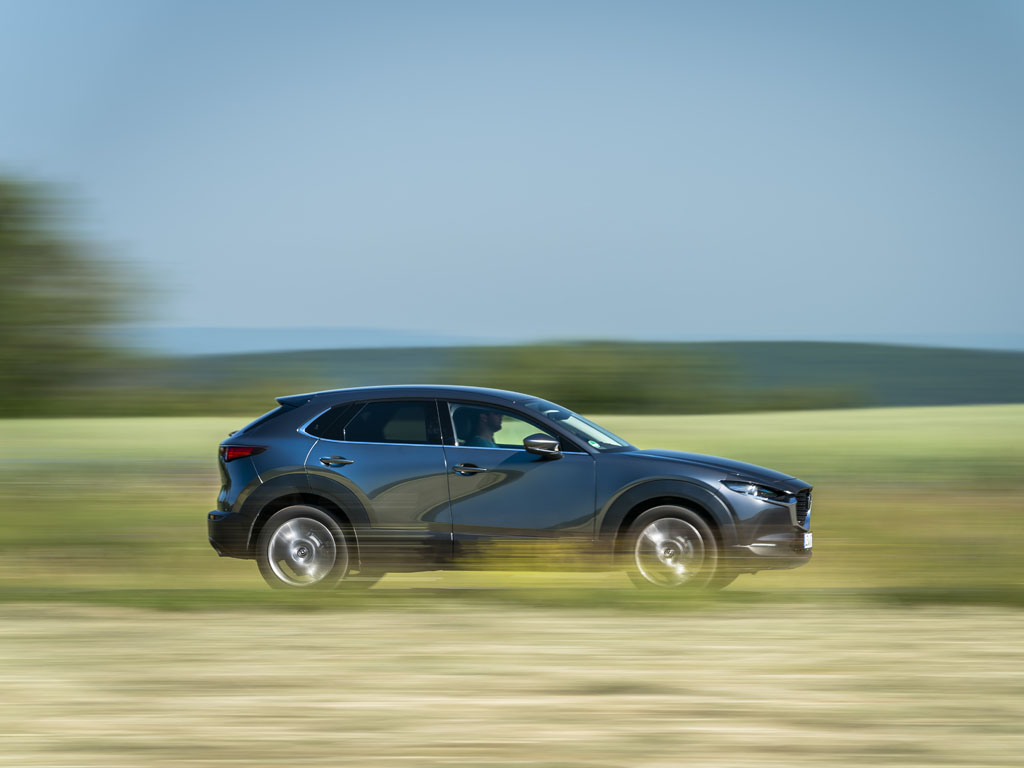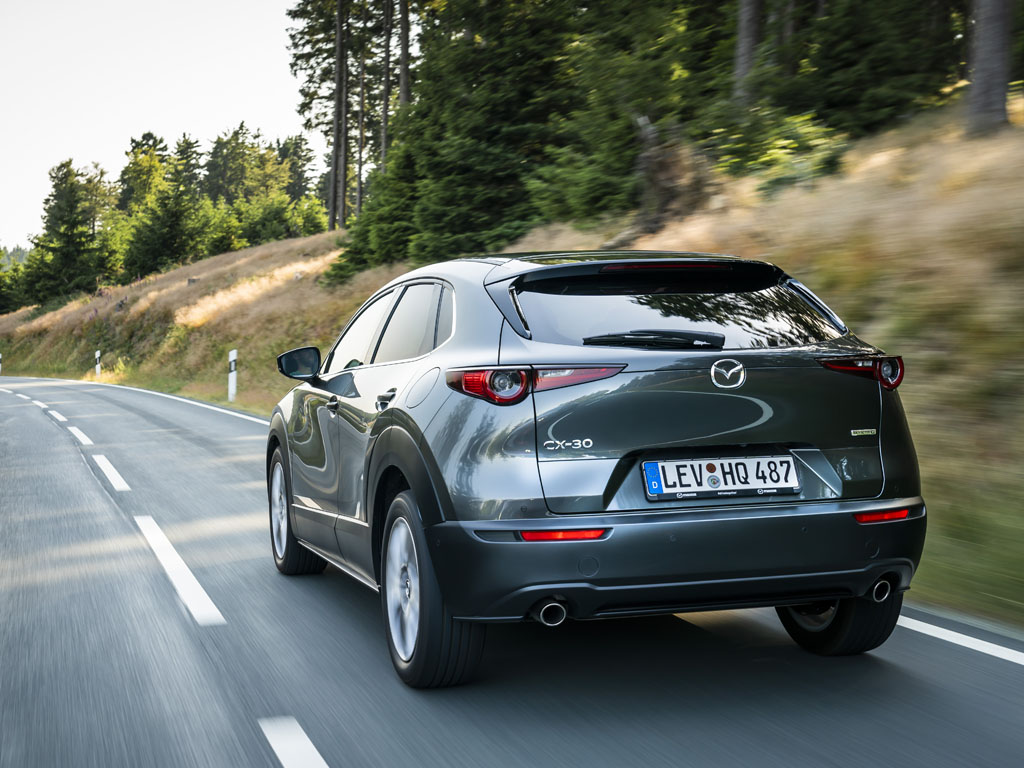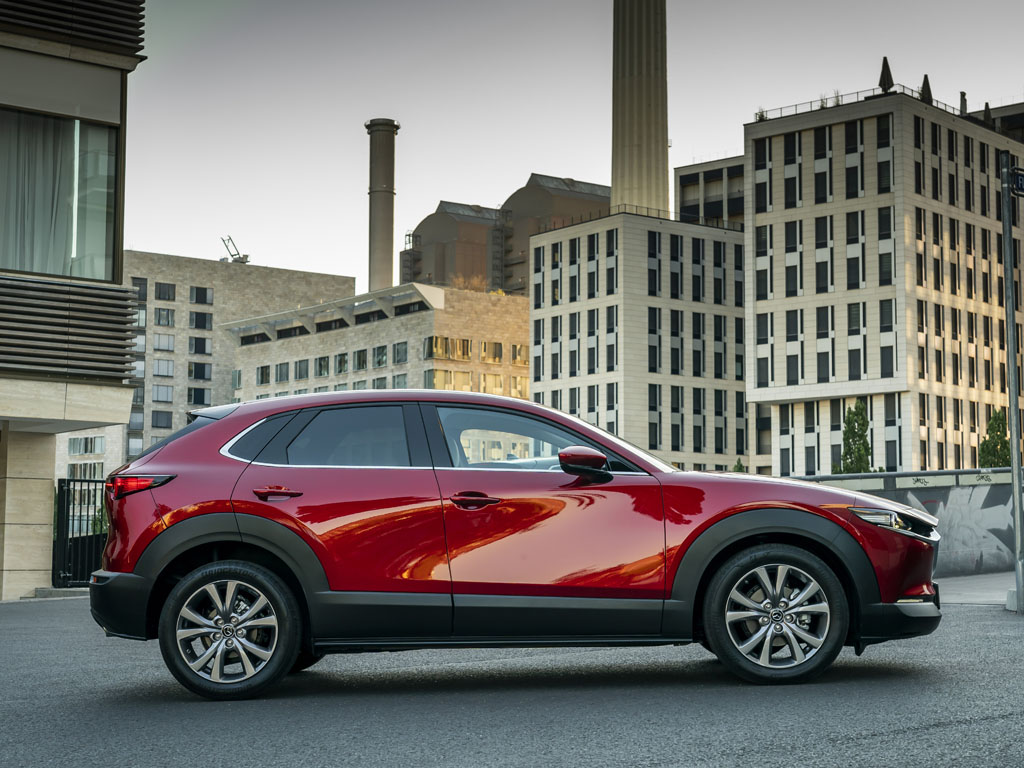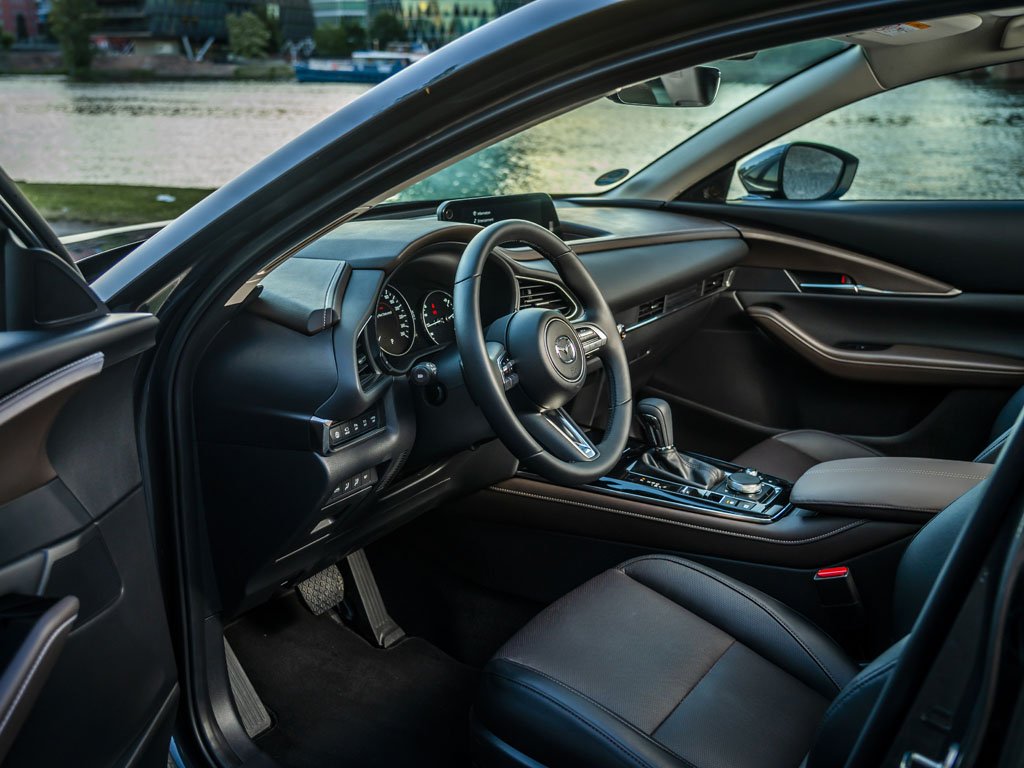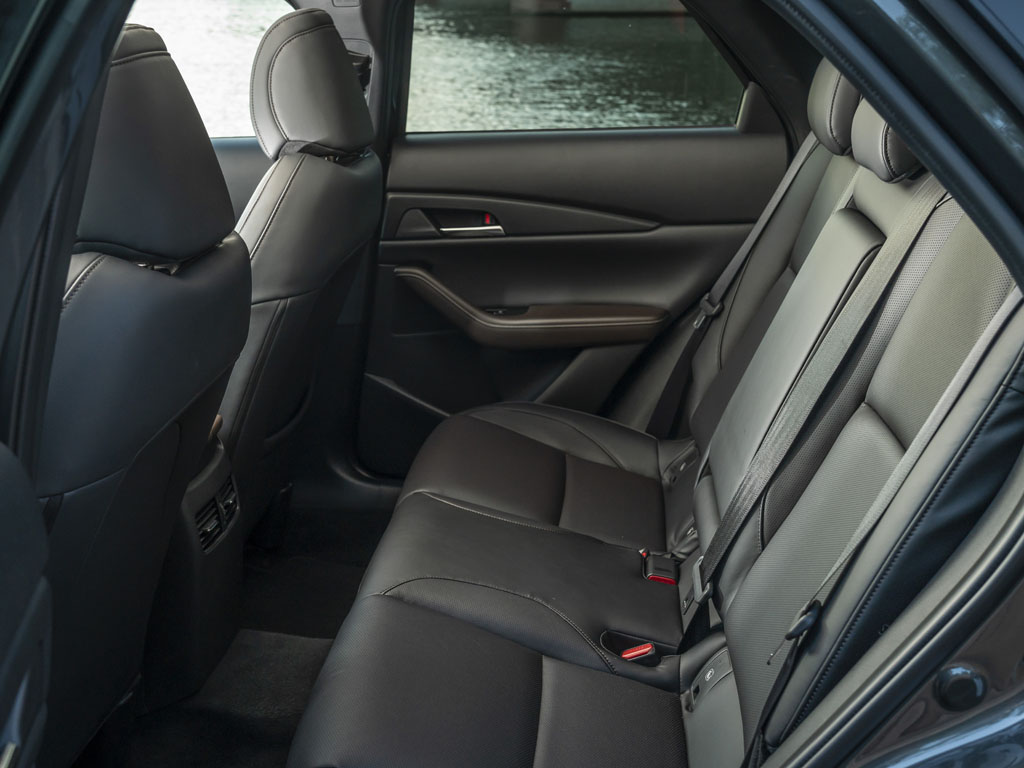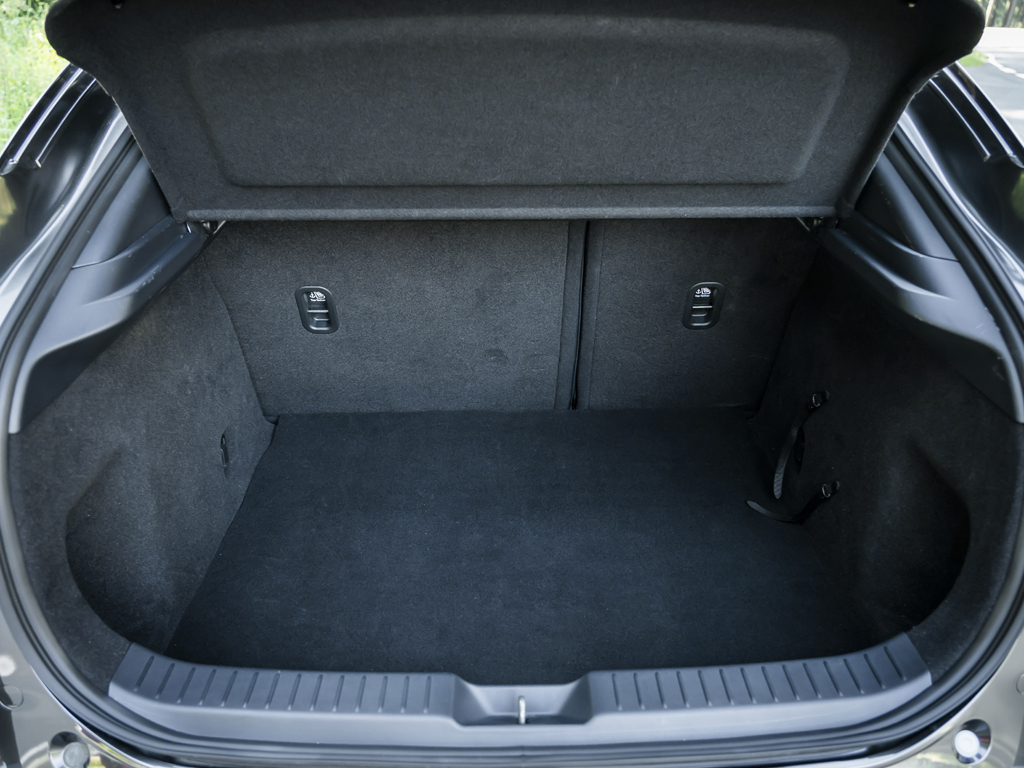First Drive: Mazda CX-30
Not just the Mazda3 on stilts, the CX-30 strengthens the Japanese brand’s SUV range, thinks Martyn Collins.
- Mazda CX-30
- Mazda CX-30
- Mazda CX-30
- Mazda CX-30
- Mazda CX-30
- Mazda CX-30
- Mazda CX-30
- Mazda CX-30
SECTOR Compact SUV PRICE TBC FUEL 41.-9.7l/100km CO2 135-173g/km
Get past the rather confusing name, (as logically the CX-30 should really be called the CX3 or CX4), and it fits in between the CX-3 and CX-5.
Based on the underpinnings of the latest Mazda3, that was launched this year, the 2,655mm wheelbase and 4,395mm overall length are reduced over the hatch and saloon range, to make the mid-size SUV more suitable for town work.
Outside, although not as head turning as the Mazda3, the CX-30 follows the same evolution of Mazda’s Kodo design. This means, a long sculpted bonnet, curved, contoured side panels (deliberately left without character lines), a coupé-like roofline and the distinctive halo rear lights.
A good-looking SUV in our opinion, although the lower plastic cladding on the bottoms of the doors and over the arches is a bit heavy handed, considering the slick look to the rest of the side panels.
Inside, the CX-30 follows the Mazda3’s minimalist approach. This means a similar tall and horizontal design, with the same rectangular 8.8-inch infotainment screen neatly integrated into the top. Quality feels impressive, with a European feel to the plastics, leatherette, metal highlights and piano black trim throughout. The interior look is finished with the thin-rimmed, sporty, three-spoke steering wheel from the 3.
Once you’re behind the wheel, it’s easy to get comfortable with the CX-30, via multi-adjustable driving position, supportive seats and plenty of space. Sadly, all that space in the front has come at the expense of the rear, where tall passengers, will find head and legroom wanting. Boot space at 430 litres is unremarkable compared to rivals too.
A 120hp SkyActiv-D diesel, four-wheel drive and the clever SkyActiv-X engines now in the Mazda3, will be available at launch, in the first quarter of 2020. But, only manual, two-wheeled drive, 120hp, 2.0-litre SkyActiv-G petrol models were available for our early drive.
On the road, performance from the petrol is nothing more than average, it’s smooth enough, but lacks torque and needs to be worked hard to do any more. What makes it more of a shame, is the precise steering, slick manual gearchange and keen handling encourage you to drive the CX-30 more spiritedly.
We look forward to driving other versions of the CX-30, in UK specification, as it shows a lot of promise against key rivals, such as the SEAT Ateca and Nissan Qashqai, but wonder if it’s too close to the Mazda2-based CX-3, to make that car redundant in the UK. We’ll reserve judgement until we’ve driven them.
It is too early for UK prices and full specifications, but a Mazda Spokesperson told us, the CX-30 would be priced around £2-3,000 more than Mazda3 on which it’s based.
Star Rating
4/5
The Lowdown
Key fleet model: Mazda CX-30 SkyActiv-X
Strengths: Styling, good to drive
Weaknesses: SkyActiv-G petrol engine lacks torque
The Verdict
Sharp styling, keen drive, but doesn’t the smaller CX-3 do the same job? The petrol engine could be torquier too.

